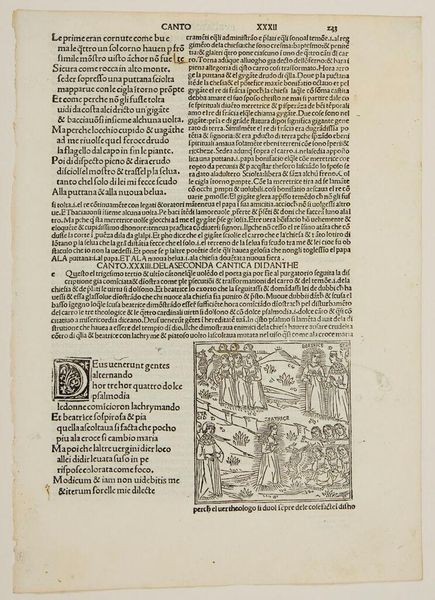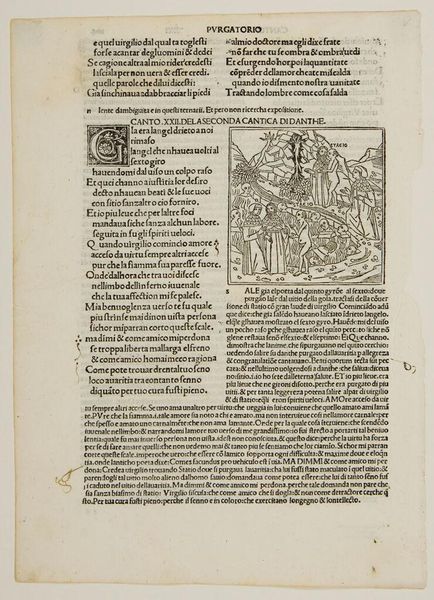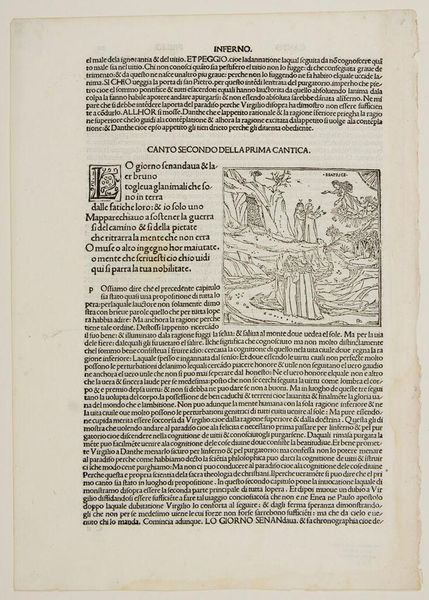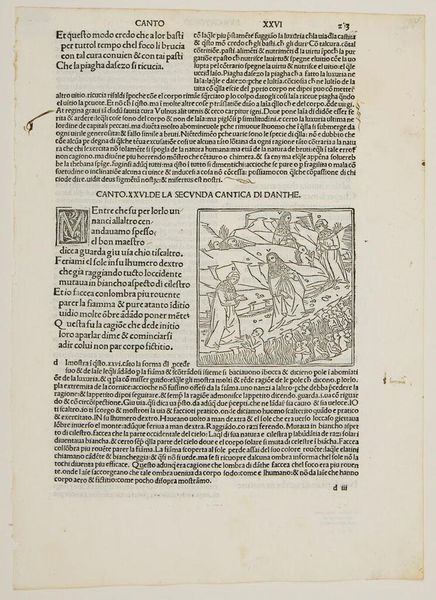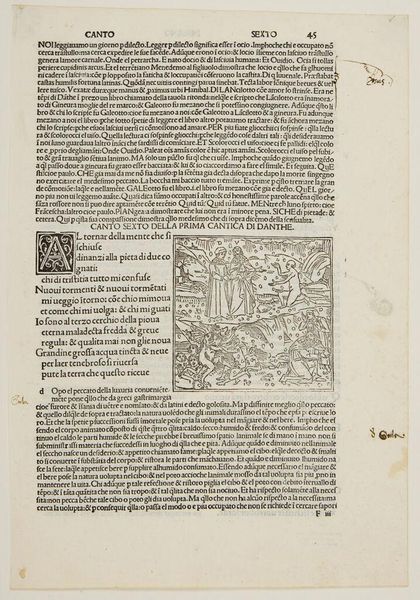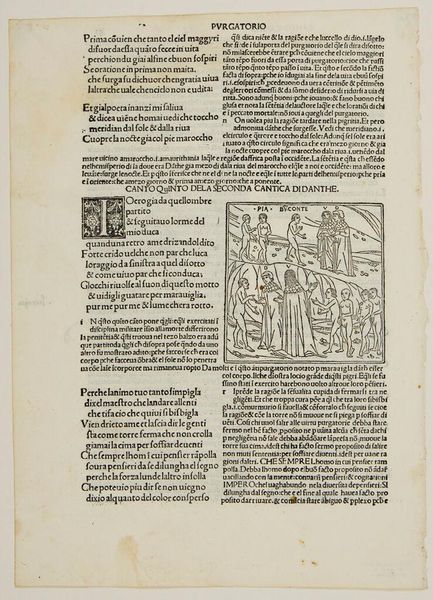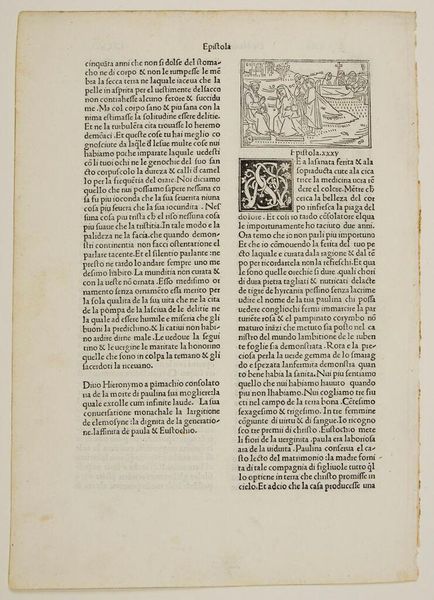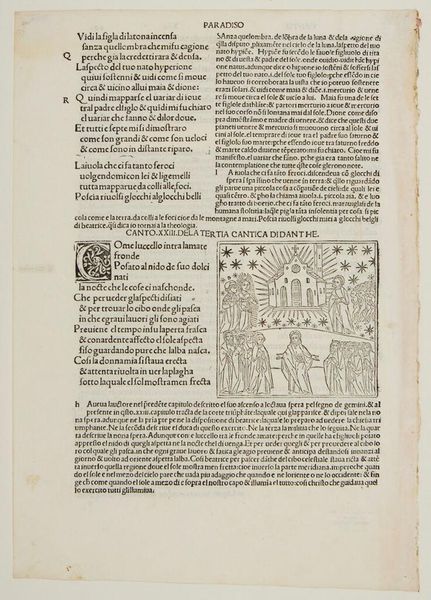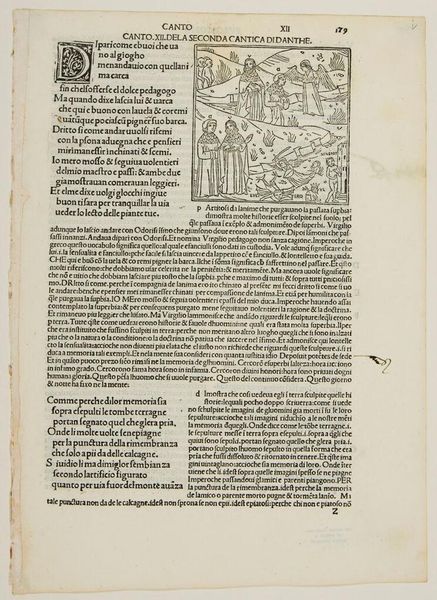
Canto XXXI. The Earthly Paradise; The Passage of Lethe c. 15th century
0:00
0:00
Copyright: CC0 1.0
Curator: Let's discuss this striking page featuring Canto XXXI from an anonymous edition of Dante's *Purgatorio*. The woodcut illustrations are captivating, aren’t they? Editor: They are! I’m immediately struck by the starkness of the imagery—the almost brutal simplicity contrasting with the rich allegorical context. It feels incredibly raw and vulnerable. Curator: It’s fascinating how the artist renders this moment of purification. The figures are so deliberately placed, almost posed within these scenes of earthly paradise. Note the river Lethe, where sins are washed away. The upper scene shows the arrival and the lower scene, the immersion. Editor: Right. It highlights the performative aspects of confession and penance. This ritualistic cleansing isn't just about the individual. It's a public act, reinforcing social and moral structures of the time. The water becomes a potent symbol for the erasure of transgression. Curator: And you see how the dense text frames the images? It’s as if the words themselves are holding these scenes in place, underscoring the weight of religious doctrine. Editor: Absolutely. The entire composition speaks to the intersection of faith, power, and the body. This is about control, but also about a very human desire for redemption. Curator: It truly is a journey through repentance, isn't it? Editor: Yes, a journey filled with struggle, hope, and the ever-present gaze of societal expectation.
Comments
No comments
Be the first to comment and join the conversation on the ultimate creative platform.
